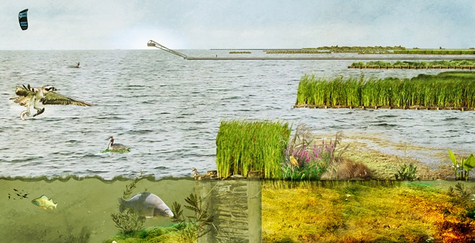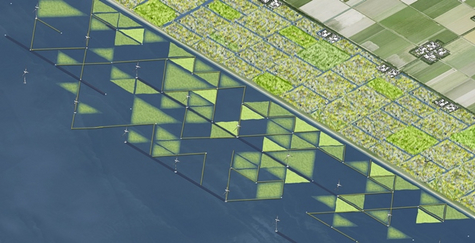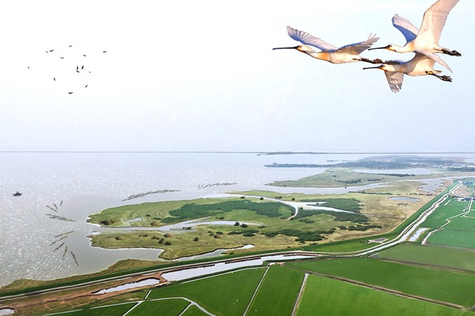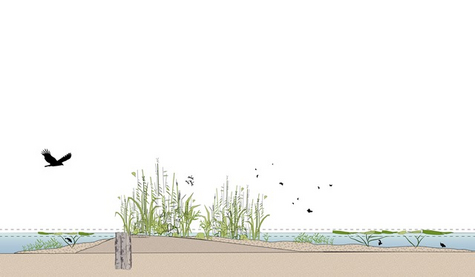Stein van Brunschot
- Contact
- LinkedIn
OEVERLAB IJsselmeer - Innovatielandschap voor waterveiligheid door ‘building with nature’.
More than two thousand years, the Hollandse Landleeuw (Dutch Land Lion) has been trying to impose its will on the Waterwolf (Dutch word for tendency of lakes in low-lying peaty land to enlarge by flooding): the era in which humans dominate nature. A total revolution is in progress. Hard flood defences and recording natural processes are no longer the solution. In the new era, humankind is ingeniously mastering landscape processes: ‘Building with Nature’. The Hollandse Landleeuw (Dutch Land Lion) is entering into cooperation with the Waterwolf. Knowledge of ‘building with nature’ is required for the new era. To keep our delta liveable and to further develop the globally tradition of water innovation.
The artificial lake is coming under heavier pressure, risks are increasing due to the capriciousness of the climate; sea-level rise and river extremes (drought and too much water). In order to guarantee flow and buffer capacity, the government is introducing a flexible water level at the IJsselmeer lake: a range that is going to be expanded to possibly half a metre in due course. This creates problems: it sets new requirements for flood risk management and has an impact on the shore system. In my proposal, ‘Building with Nature’ methods will be used to transform the problems (water, economics, ecology) which are intensifying due to the flexible water level, into a comprehensive area development. The flexible water level as ‘reconciliation between the regulated and the natural water system’.
With the IJsselmeer as role model for the ‘new flood risk management era.’ The rich diversity in shore typology on the IJsselmeer thus offers an excellent opportunity for the ‘building with nature’ experiment: the SHORE LAB IJsselmeer. The landscape design was made for two locations with divergent characteristics, problems and ‘building with nature’ potential. Noordoostpolder (North-East Polder): the ‘back dyke cultivation marsh’, ‘floating elements’ and ‘living reefs’ together form a new phenomenon at the edge of the polder. Capitalising on seepage problems, the deep waters and the identity of agriculture and the fishing industry. The production landscape is combined with new ecological values and flood risk management.
Friese IJsselmeerkust (Frisian IJsselmeer Shore): boomriffen (tree reefs), kraggendammen (floating root mat dams) and the moeraspolder (marsh polder) tie in with the shore characteristics like sediment transport and shore vegetation. They increase the area and robustness of the natural water defences, a spectacular ecological landscape where recreation is combined with flood-risk management. The new icon in the Dutch delta, a collaboration between entrepreneurs, governments, nature organisations, knowledge institutes and water managers together form the SHORE LAB. The series of sub-projects create a water retaining park laboratory. The edge of land and water; previously the separating dyke, transforms into the connecting piece between water and hinterland. In contrast to the marking posts: dyke and pumping station, the ‘building with nature’ experiments provide new economic revenue models. A long-term investment, with the result being safety, ecological progress and prosperity.
Commision members: Sander Lap (mentor), Lodewijk van Nieuwenhuijze, Joost van Hezewijk. Additional members for the exam: Berdie Olthof, Roel Wolters.





